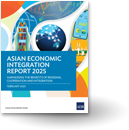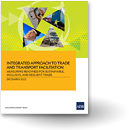Developing countries should not worry yet about Wall Street bashing
Wall Street bashing is always in vogue during election time, as we are observing in the run-up to the US presidential election. Is this because financiers and bankers deserve punishment for their greedy and reckless behavior that adds no value to the economy? Or are they simply political footballs?
Barring any prejudice on which stance is right, factual investigation offers some clues about how to better recognize the role of the financial sector in the global economy. In terms of direct value addition, financial services’ contribution to the economy is not very large, accounting for around 5-7% of GDP in countries like the Republic of Korea, the Netherlands and the UK based on UN statistics. The share is lower in France and Germany, and a bit higher, at around 8% in the Philippines and 12% in Singapore.
These figures, nevertheless, obscure crucial functions of the financial sector in supporting other industries and sectors. While financial intermediaries generate direct value-added in the form of fees and charges, the financial sector also contributes to the economic behavior of firms and governments by intermediating financial resources from savers (investors) to borrowers (users). We can’t imagine business activities without having recourse to loans from banks or issuing securities in the form of bonds, bills, or equities. Therefore, financial market deepening—particularly the development of financial intermediaries and capital markets—is tantamount to establishing the backbone of economic development.
Unfortunately, many developing economies, including several in Asia, are lagging far behind advanced economies. This is one of the reasons the Asian financial market is more connected outside the region than inside. According to ADB’s Asian Economic Integration Report 2015, the share of Asian offshore portfolios invested in this region (equity and debt) remained low at 19.5% in 2014. Intraregional debt holdings rose from 15.9% in 2013 to 18.7% as Asian investors reduced their exposure to European and other advanced economies, but the picture is still highly tilted toward the outside. Although the absolute value of intraregional equity holdings grew by 10.8% year-on-year in 2014, its share of Asia’s total global holdings slid from 23.1% to 20.5%. Asian investors are still making relatively much larger investments outside Asia, missing out on opportunities for recycling large regional liquidity into regional investments.
What is driving this trend?
- Financial market deepening in developing countries is progressing only slowly. For instance, the market capitalization ratio in Bangladesh and Sri Lanka is less than 30% compared to over 100% in the UK. Cambodia and Lao PDR are still grappling with challenges in getting their stock exchanges on track. While bond markets in the Republic of Korea and Malaysia—and also recently those in the People’s Republic of China, India, and Thailand—have developed quite rapidly, debt financing through capital markets in other developing Asian countries still remains largely untapped. Furthermore, if growth in the primary market is not matched by a well-functioning secondary market, interest rates across securities of different terms cannot provide appropriate information about the benchmark yield curve.
- Financial infrastructure needs further development. Relative to rapidly expanding government bond markets, Asian corporate bond markets are growing much slower, partly reminiscent of a caution against excessive leveraging of businesses in the run-up to the Asian financial crisis in the late 1990s. In this context, higher transparency of business activities—including through timely disclosure of audited financial statements and establishment of effective credit bureaus—will serve to vitalize direct and indirect financing mechanisms by lessening the information asymmetry in the market.
- Overall corporate governance needs to improve to enhance the transparency and accountability of businesses, against which investors can make sound investment decisions. This will not only curtail the risk of bankruptcy, which leads to haircuts or loss of investments, but also reduce the risks associated with speculation.
- Unlike in advanced economies, banks and other financial institutions in developing economies like those in Asia more often than not suffer from impaired assets due to policy lending to ailing state-owned enterprises, or even private firms, under pressure from the government. This not only undermines the capital adequacy of the financial institutions but also curbs their capacity to provide fresh credit to other, more sound, firms, harming the investments of the private sector, which is becoming more and more essential to shore up the faltering demand side of many economies.
If excessive business profits are a cause for concern to politicians, a wise way to address this is to induce more competition into the financial sector, instead of reducing it by imposing restrictions. Policy-makers should also attach higher importance to prudential regulations, rather than trying to stifle the vigor and innovation of the financial sector. If history is any guide, we will observe the similar Wall Street bashing every time polling season comes around in the US. However, history also tells us that vote-seeking is one thing, but what’s good for the economy is another.
The developing world has a long way to go to reach the stage of financial sector development of advanced economies. If what attracts political attention sometimes is an indication that the sector has (over) grown with high stakes, in the case of some developing countries they should rather be worried about lack of bashing as far as their financial sector is concerned.
Original article was published at the ADB Blog and duplicated here with permission from the author. *




